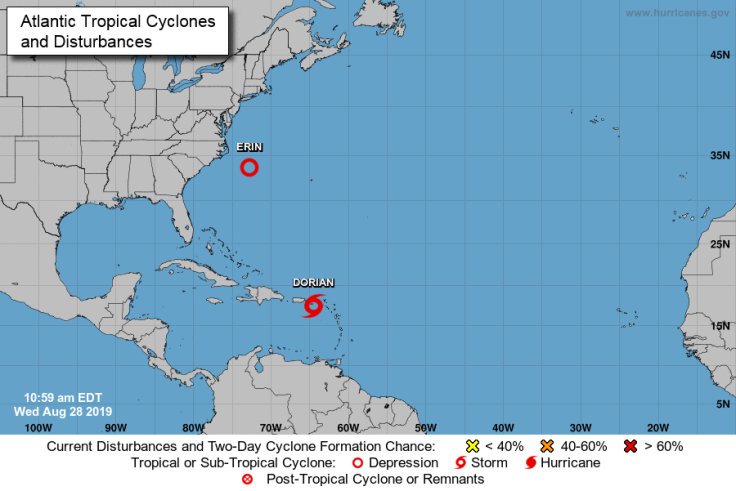
Tropical Storm Dorian moved further north into the waters of the Caribbean Sea and
is expected to touch Puerto Rican soil in the next few hours. According to weather forecasts, the storm will leave rains throughout the island.
"With these systems that
are not very organized, these last-minute changes occur.
The truth is that the meteorological plane found another center further north, and therefore the trajectory
changed significantly for the area," said Roberto García, director of the local meteorological service. "It
continues to move west-northwest, then turn further northwest at 13 miles per hour," he added.
For local forecasts, watches, and warnings related to Tropical Storm #Dorian, you can follow these official accounts:
— National Hurricane Center (@NHC_Atlantic) August 28, 2019
Puerto Rico and the US Virgin Islands: @NWSSanJuan
British Virgin Islands: @abmetservice
Dominican Republic: @onametRD pic.twitter.com/gULKPC9NF1
The United States National Hurricane Center (HNC) reported that as the approach to the Virgin Islands and Puerto Rico the storm has gained more strength and now its maximum sustained winds are 60 miles (95 km) per hour. After passing through the island, Dorian will move eastward to the Dominican Republic during the night of that day. Then its intensity would return when passing near the Turks and Caicos Islands and the southeast of the Bahamas. Dorian will hit Florida, where could arrive on Monday as a hurricane category 2 and winds close to 100 miles per hour. The entity also warned that this rain "can cause sudden fatal floods."
Here are the current watches and warnings for #Dorian as of 11 AM 28 August:
— National Hurricane Center (@NHC_Atlantic) August 28, 2019
Hurricane Warning: US and British Virgin Islands, Vieques, and Culebra
Tropical Storm Warning and Hurricane Watch: Puerto Rico
Tropical Storm Watch: Dominican Republic from Isla Soana to Samana pic.twitter.com/DeyhubFIPX
Within hours of the storm's arrival in Puerto Rico, the new governor of the island, Wanda , declared a state of emergency to expedite federal aid. The citizens of Puerto Rico stocked up with basic products and schools prepared to shelter hundreds of people.
Vázquez said that Puerto Rico is better prepared than before. “It's a situation where you have to be careful, but the town has prepared. After María, I think we have all learned the lesson (...
)the agencies are ready and better prepared,” she said at the press conference.
Here are the 11 AM AST/EDT August 28 Key Messages for Tropical Storm #Dorian: https://t.co/3MJMucK0nP pic.twitter.com/QtRsvXgc2E
— National Hurricane Center (@NHC_Atlantic) August 28, 2019
"We urge citizens to take the
necessary precautions. At the moment, the event is a tropical storm that
is expected to bring a lot of rain. Last night, the President accepted our disaster declaration request to expedite the processes once #Dorian passes through the area," she tweeted.
Le exhortamos a la ciudadanía que tome las precauciones necesarias. Al momento el evento es una tormeta tropical que se espera traiga mucha lluvia. Anoche el Presidente acogió nuestra solicitud de declaración de desastre para agilizar los procesos una vez pase #Dorian por la zona pic.twitter.com/sCBGB6bcPh
— Lcda. Wanda Vázquez Garced (@wandavazquezg) August 28, 2019
In 2017, Hurricane Maria made landfall in Puerto Rico on Wednesday morning as a Category 4 storm with maximum sustained winds of 155 mph.
Intense flooding was reported across the territory, particularly in San Juan, the capital, where many residential streets looked like rivers.
Maria was a Category 5 hurricane — the strongest there is — when it hit the Caribbean on Monday night, killing at least seven people on the island of Dominica and one person on Guadeloupe. At least two people
were injured. The Prime Minister of Dominica, Roosevelt Skerrit, reported "widespread devastation," including damages to his own house,
which was shredded by the storm.
© 2025 Latin Times. All rights reserved. Do not reproduce without permission.






